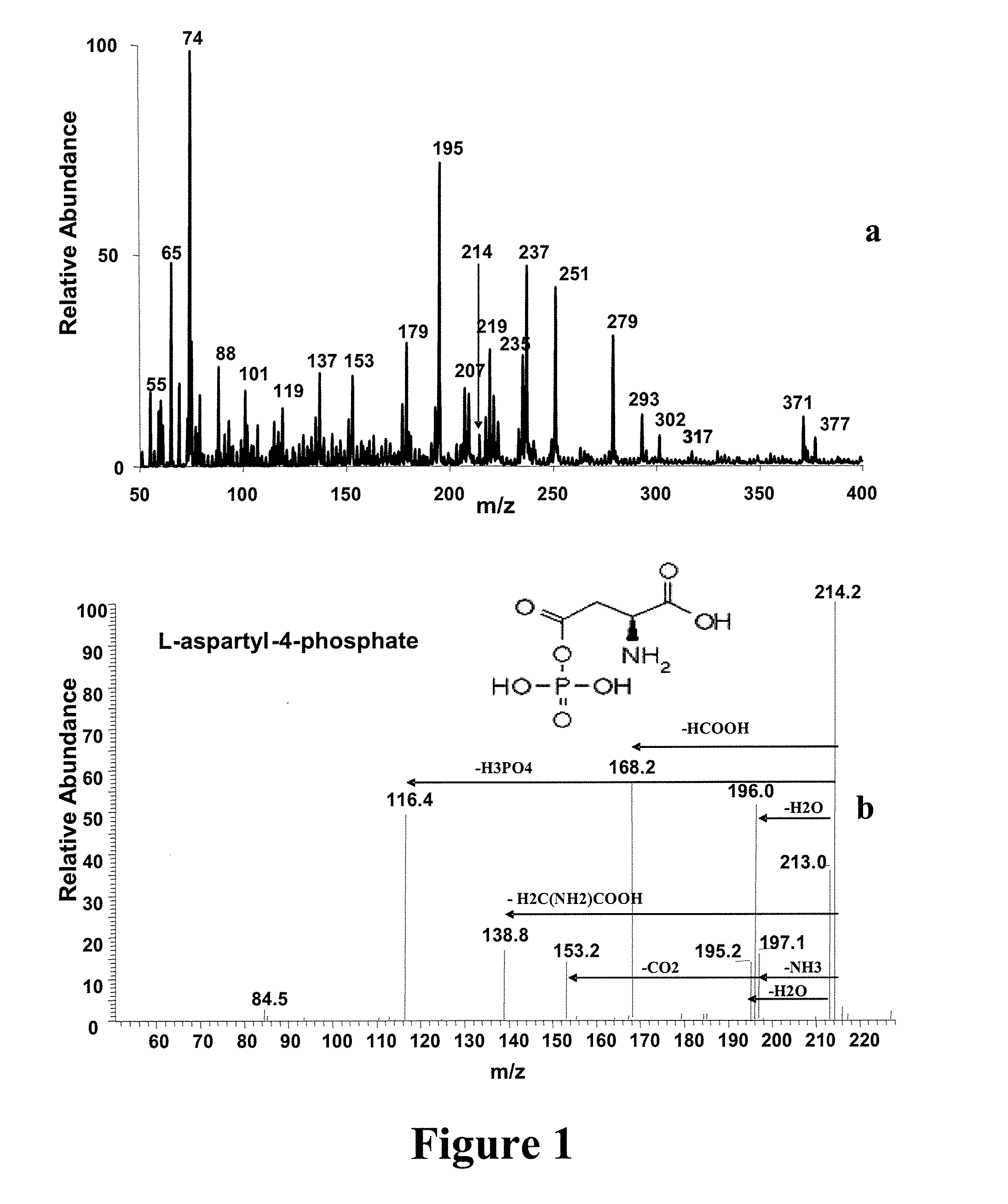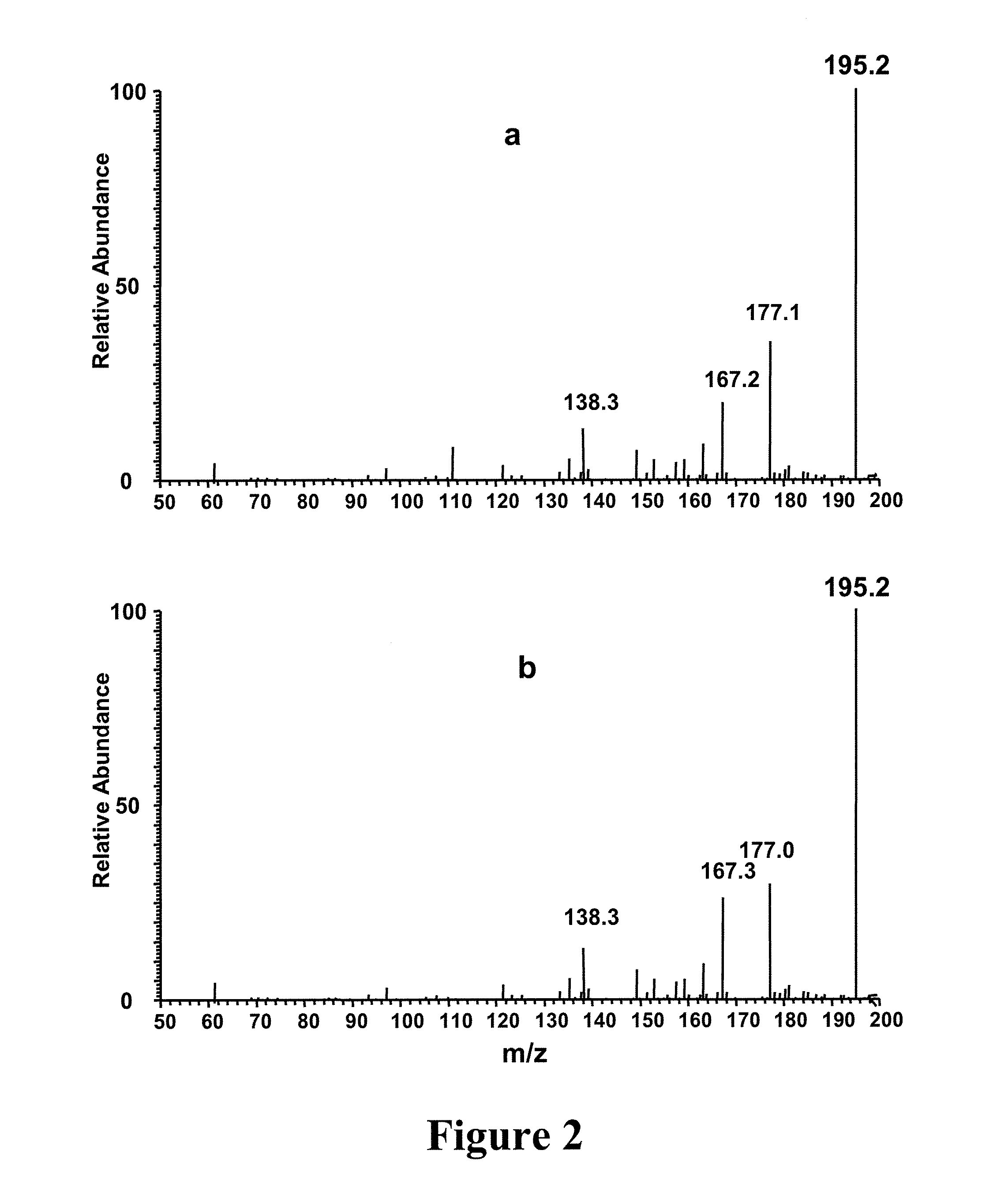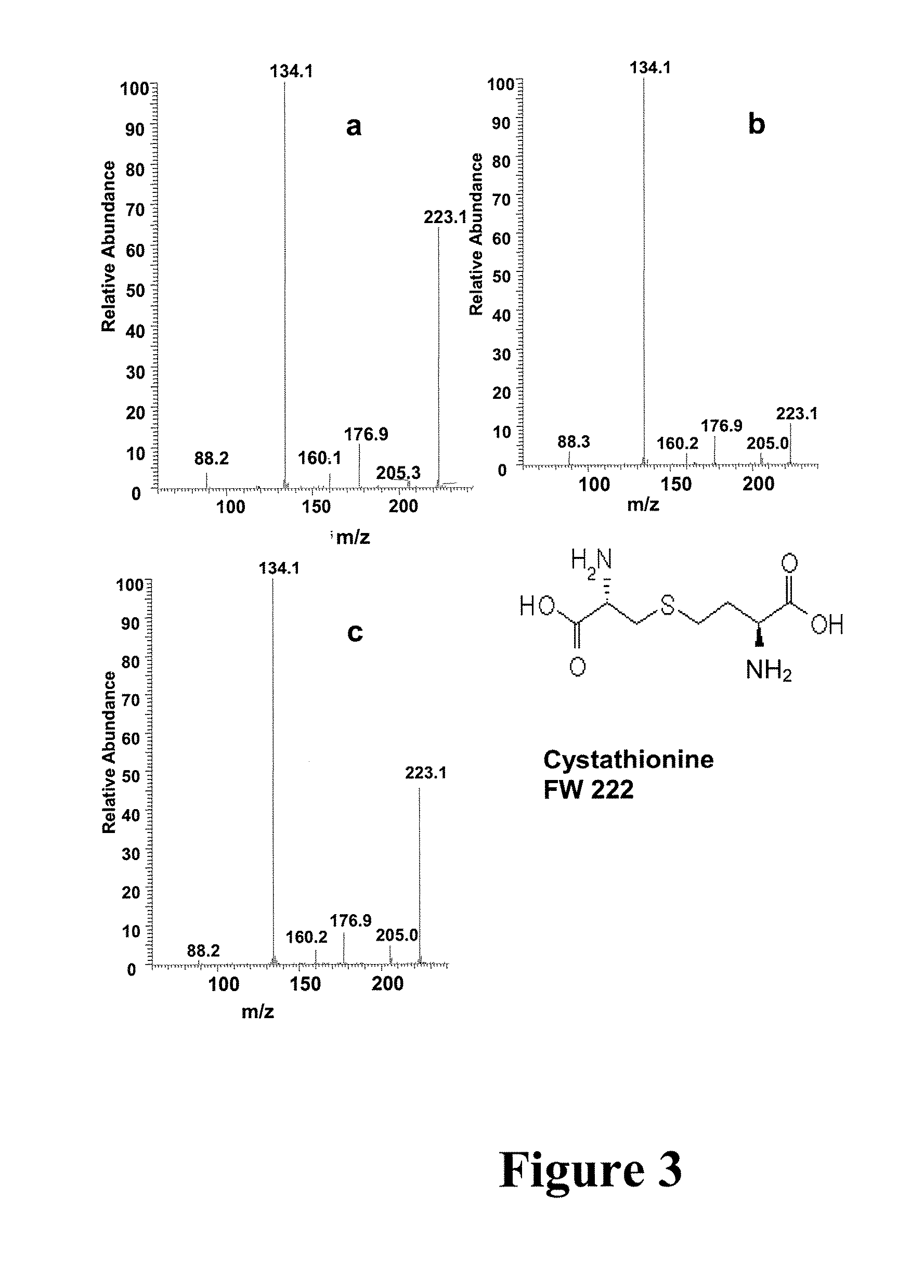Combined Spectroscopic Method for Rapid Differentiation of Biological Samples
- Summary
- Abstract
- Description
- Claims
- Application Information
AI Technical Summary
Benefits of technology
Problems solved by technology
Method used
Image
Examples
example 1
[0049] Experimental—Materials and Methods: Male Balb / c mice weighing 16-18 g were acclimated for 7 days in normal shoebox cages with wood chip bedding prior to inoculation. Then the test mice were dosed with M109 lung tumor cell line18 suspended in RPMI 1640 with L-glutamine. Mouse serum (1%) was added to the inoculant. Urine samples were collected from the healthy mice (marked as C1 and C3) and the test mice (marked as T2 and T4) for 24 hours. An abscessed tumor was observed on mouse T4 with some blood evident near the tumor. All the mice were weighed before and after inoculation. Urine samples were passed through a 10 kD filter and frozen at −80° C. for further analysis.
[0050] Methanol was purchased from Mallinckrodt (Phillipsburg, N.J., USA) and acetic acid and ammonium acetate were purchased from Fisher Scientific (Fair Lawn, N.J., USA). Lactic acid, creatinine, creatine, succinic acid, citric acid, L-aspartyl-4-phosphate, glucuronic acid, cystathione and hippuric acid were pur...
example 2
[0069] The effect of diet on metabolites found in rat urine samples was investigated using nuclear magnetic resonance (NMR) and an ambient ionization mass spectrometry experiment, extractive electrospray ionization mass spectrometry (EESI-MS). [see H. Gu, H. Chen, Z. Pan, A. U. Jackson, N. Talaty, B. Xi, C. Kissinger, C. Duda, D. Mann, D. Raftery, and R. G. Cooks, “Monitoring Diet Effects from Biofluids and Their Implications for Metabolomics Studies,”Anal. Chem., 79, 89-97 (2007), the disclosure of which was previously incorporated by reference]. According to this exemplary example, urine samples from rats with three different dietary regimens were readily distinguished using multivariate statistical analysis on metabolites detected by NMR and MS. To observe the effect of diet on metabolic pathways, metabolites related to specific pathways were also investigated using multivariate statistical analysis. Discrimination was increased by making observations on restricted compound sets....
PUM
 Login to View More
Login to View More Abstract
Description
Claims
Application Information
 Login to View More
Login to View More - Generate Ideas
- Intellectual Property
- Life Sciences
- Materials
- Tech Scout
- Unparalleled Data Quality
- Higher Quality Content
- 60% Fewer Hallucinations
Browse by: Latest US Patents, China's latest patents, Technical Efficacy Thesaurus, Application Domain, Technology Topic, Popular Technical Reports.
© 2025 PatSnap. All rights reserved.Legal|Privacy policy|Modern Slavery Act Transparency Statement|Sitemap|About US| Contact US: help@patsnap.com



